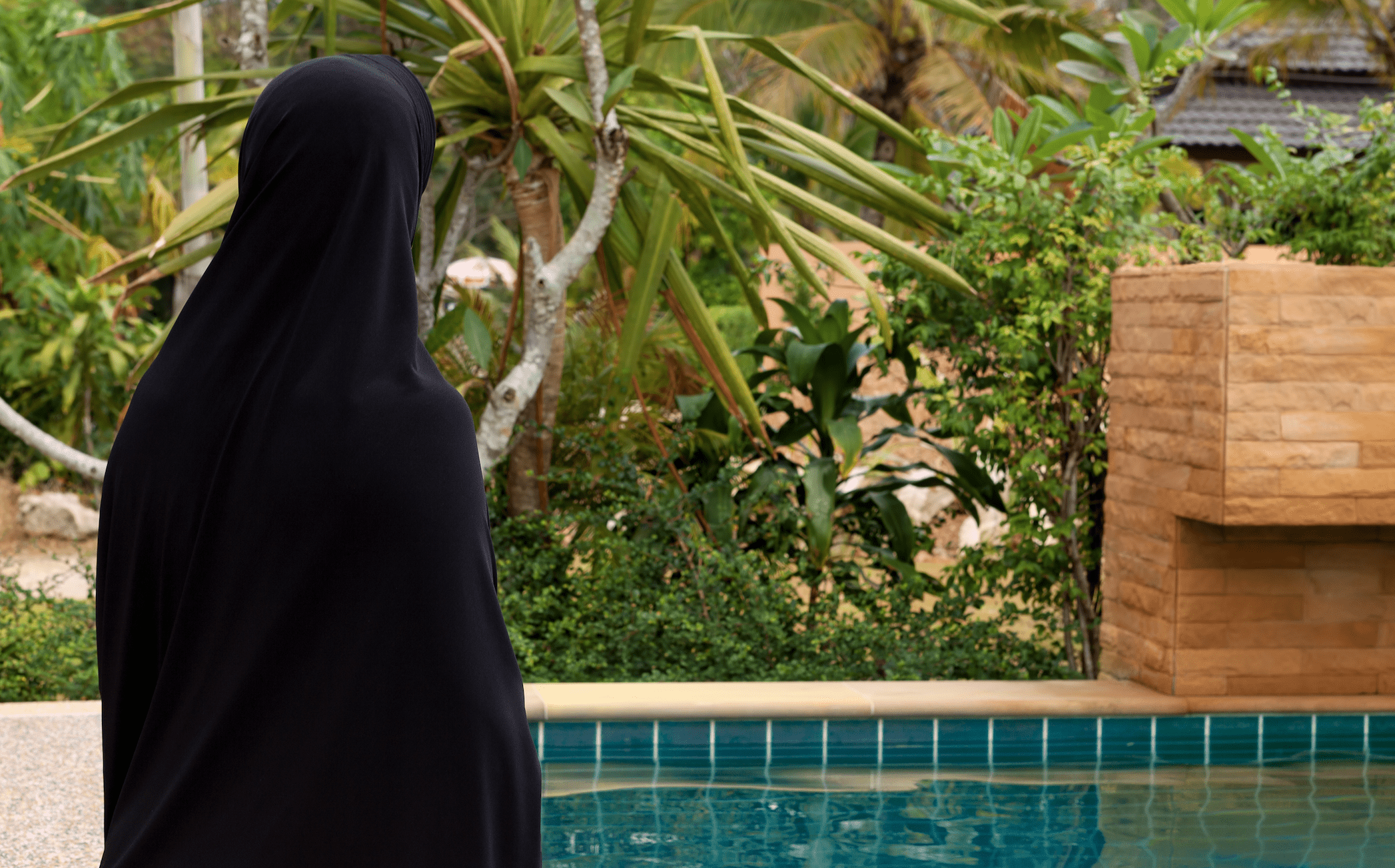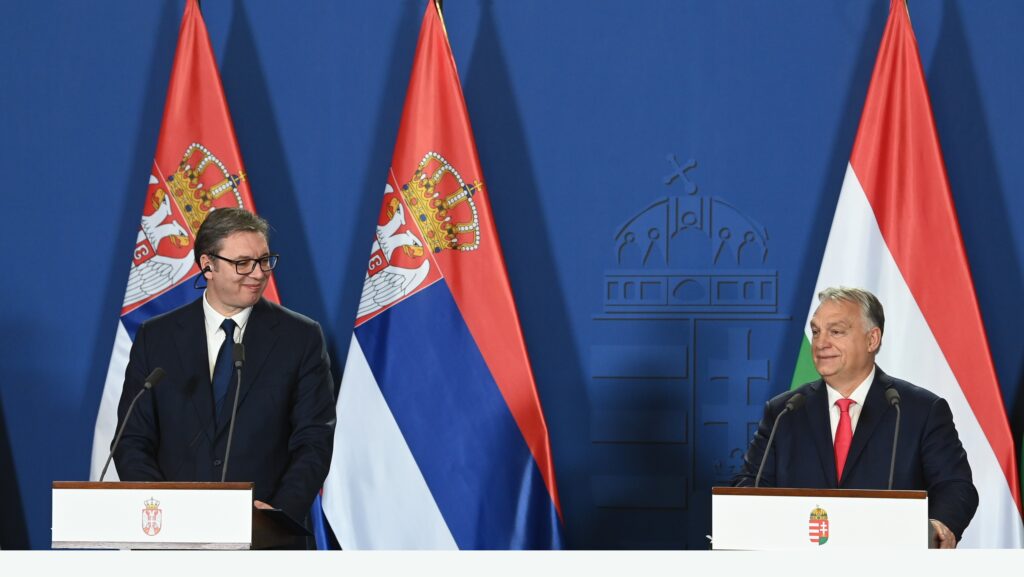Muslim religious clothing has been a focus of public debate in France in recent years. Over the last few weeks, politics and law have clashed after a local administrative court in Grenoble ruled that the city council’s decision to allow the wearing of the so-called burkini was illegal. However, it is not only in France that there are legal disputes over Muslim garments: in Europe, the issue has been a challenge since the 1990s, with European courts in Strasbourg and Luxembourg having passed several rulings on such cases.
n the shadow of the presidential election, a strange case–or, more precisely, a garment–has become the focus of political debate in France. In the city of Grenoble, a debate has begun on the compatibility of the Muslim swimsuit, the burkini, with the values of the French Republic. The city council leadership decided to simultaneously allow the wearing of the burkini and not to ban ‘the naked female upper body’ in swimming pools.[1] A few days later, the local court ruled that the city’s decision was illegal. In the years before the decision, some 30 French seaside resorts had banned the wearing of the burkini.
In the city of Grenoble, a debate has begun on the compatibility of the Muslim swimsuit, the burkini, with the values of the French Republic
It is useful to know that the burkini is not a “sacred garment” but a product of modern times in the Muslim world. However, this kind of Muslim women’s beachwear is not a European phenomenon: in Egypt, the “sharia swimsuit” and the “swimming hijab” have been available for two decades. [2] The burkini was designed by the fashion designer Aheda Zanetti, who has also created other sportswear for Muslim women. ‘I designed this dress for the freedom of Muslim women,’ Zanetti stated just a few years ago.[3] The name burkini is obviously a contraction of the words burqa and bikini.
But there are other Muslim religious symbols besides the burkini that have been the subject of controversy in different European countries for decades.
Islam: Different Interpretations
In Europe, Muslim religious clothing causes tensions in society for two main reasons: on the one hand, Muslim garments are very different from the European ways of dressing. In the past, women in small villages, for example, also wore headscarves, but they were less obligatory in religious and social terms. On the other hand, different Muslim religious communities have different ideas about what compulsory clothing should look like.
Some analyses[4] highlight that the dress code for Muslim women is governed by a mix of cultural and religious considerations within Muslim communities. However, according to a group of Muslim experts, what is of primary importance for the Islamic religion itself is what the Qur’an and the so-called Sunnah, or prophetic wisdom, say about the clothes of Muslim believers. In addition, there is also a difference between the Sunni mainstream’s understanding and the views of other groups: the Sunni mainstream accepts the Qur’an and the other ‘six authoritative books’ as the source of Islamic religious doctrine.
Many Muslim scholars also conclude that the general way in which Muslim women should dress includes covering the face precisely because a specific prophetic commandment states that they should not do so only in holy places
According to Muslim scholars, the sources clearly prescribe the following obligations, directly or indirectly related to the clothing of Muslim women: first, the “lowering of the gaze” in order to preserve modesty and humility. More specifically, the religious requirement is to cover the body with a loosely-woven garment that reaches down to the feet. There are three main pieces of Muslim women’s wear that can be distinguished: the khimar, the niqab and the jilbab. As far as covering the head is concerned, the traditional or simple headscarf is best identified with the word hijab, a term that appears in several places in the Qur’an. Wearing a jilbab, which is essentially a full garment covering the head, rather than merely a veil around the head, is also defined as an obligation in outdoor spaces. It is also obligatory to wear a khimar, which is used to cover the head and chest. Many Muslim scholars also conclude that the general way in which Muslim women should dress includes covering the face precisely because a specific prophetic commandment states that they should not do so only in holy places. It follows that it was required everywhere else in the Prophet’s time. However, the importance of covering the face is disputed among Muslim religious scholars, with some arguing that it is not compulsory and cannot be clearly inferred from the sources as an obligation. Analysts summarily quote Sheikh Mohammad Tantawi, former Grand Imam of Al-Azhar University, who says that the headscarf, or hijab, ‘is what is obligatory. It means covering the entire body except the face and hands and the garment should be neither too tight nor too transparent.’[5] By contrast, there are Muslims who reject the wearing of headscarves or simply consider them out of date and incompatible with modern lifestyles. In addition, there are different variants of the headscarf or veil, such as the hijab, the chador and the burqa, which have evolved from slightly different interpretations of the relevant passages of the Qur’an.[6]
Open Cooperation Model Versus Laicism
It is not only recently that Muslim religious clothing has become an issue in Europe. In fact, it has been the subject of debates since the 1980s. At that time, the so-called passport issue was causing headache to the authorities, as Muslim women were only allowed to have their faces photographed with a headscarf over their heads. This raised administrative and security issues in several countries. The Muslim headscarf has caused serious constitutional dilemmas in several European countries since the 1990’s, with the most significant debates taking place in Germany and France.
In Germany, because of the bitter experience of religious wars, Frederick the Great’s concept of the state is still very important in religious matters. In the 18th century, the Prussian monarch extended religious tolerance. In Frederick’s time, the concept of state law was that the task of state institutions was primarily to ensure that no religious denomination dominated over another.[7] The modern version of this idea is put into practice in German constitutional law through the institution of ‘negative religious freedom’ and the principle of ‘state neutrality,’ as reflected in the so-called Ludin case. In 2003, the German Federal Constitutional Court ruled that Ms. Ludin, an Afghan-born teacher, cannot be forbidden to wear a headscarf in a public school. The ruling was passed after a state school made it a condition of employment for the Muslim teacher not to wear her religious headscarf during teaching hours.[8] The Constitutional Court held that as the state must guarantee the principle of neutrality in questions of religion, the Muslim teacher must be guaranteed equal treatment. Although the Court acknowledged that the freedom of religion of children and parents was an important consideration, it concluded that an abstract threat to religious freedom and school tranquillity in and of itself cannot justify the restriction of the plaintiff’s freedom of religion. The decision was followed by heated debates in Germany. Almost a decade later, in 2015, the German Constitutional Court ruled that a blanket ban on Muslim headscarves in schools unconstitutional.[9] The restriction is only possible if there is a concrete risk of a dangerous situation arising in the school. With this decision, German constitutional law started to follow the model of ‘open cooperation.’
In France, however, laicism is the predominant state model as opposed to open cooperation. Here, the first serious case took place in 1989, when three Muslim schoolgirls refused to take off their headscarves at the request of the head of the school. The long legal battle finally came to an end in 2004 when the new French government passed a law banning the wearing of headscarves (and other religious symbols) in state schools. This decision was supported by the French Conseil d’État (Council of State).[10]
In France, however, laicism is the predominant state model as opposed to open cooperation.
The approach of the European Court of Human Rights is somewhere between the German and the French model. For example, the court has ruled that schools are particularly at risk of becoming places of religious conflict. The court also said this situation can be exacerbated if a teacher expresses their religious beliefs through their behaviour and even more so if through their way of dressing.[11]
In recent years, cases of Muslim headscarves have been considered by various European courts. In 2017, the Court of Justice of the European Union issued a double ruling in the Achbita and Bougnaoui cases. The court ruled that it does not constitute discrimination if an employer imposes a prohibition on religious symbols in the private sphere. However, the condition of legality is that the prohibition should apply equally to all religious symbols, not just the Muslim headscarf.
[1] Der Spiegel, ‘Grenoble erlaubt Burkinis in Schwimmbädern’, Spiegel.de, (17.05.2022), https://www.spiegel.de/panorama/gesellschaft/grenoble-erlaubt-burkinis-in-schwimmbaedern-oben-ohne-baden-auch-ok-a-e936c7b2-2cb9-4bc0-9436-30ec6d6d196f, accessed 18 May 2022.
[2] Urmee Khan, ‘It’s not itsy-bitsy, it’s not teeny-weeny – it’s the burkini’, TheGuardian.com, (28 Nov. 2006), https://www.theguardian.com/world/2006/nov/28/religion.uk, accessed 15 May 2022.
[3] Aheda Zanetti, ‘I created the burkini to give women freedom, not to take it away’, TheGuardian.com, (24 Aug. 2016), https://www.theguardian.com/commentisfree/2016/aug/24/i-created-the-burkini-to-give-women-freedom-not-to-take-it-away, accessed 15 May 2022.
[4] Dars, Musharraf, Munir, ‘The Dress Code for Muslim Women: A Linguistic Analysis of the Quränic Verses and the Prophetic Traditions’, Journal of Islamic and Religious Studies, Vol. 3, Issue. 1, 2018, pp. 27-37.
[5] ‘The Dress Code for Muslim Women’, p. 35.
[6] Louise Kubelka, Marcus Schian, Causa Kopftuch. Ein europäischer Vergleich, Berlin, Europa-Kontakt Informations- und Verlagsgesellschaft mbH, 2004, p. 4.
[7] Max Lehmann, Preußen und die katholische Kirche seit 1640. Nach den Acten des Geheimen Staatsarchives. 2. Theil. 1740-1747, Leipzig, Hirzel, 1881, p. 4.
[8] BVerfG, Urteil des Zweiten Senats vom 24. September 2003 – 2 BvR 1436/02. Rn. 1
[9] BverfG, Beschluss vom 27.01.2015, Az. 1 BvR 471/10. Rn. 80
[10] Anna C. Korteweg, Yurdakul Gökce, The Headscarf Debates. Conflicts of National Belonging, Stanford, Stanford University Press, 2014, p. 30.
[11] ECHR, Judgment on 15.02.2001, App. no. 42393/98 Rn. 4a








